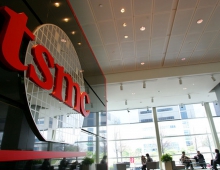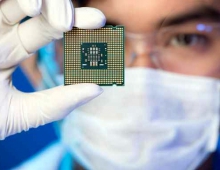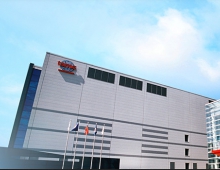
TSMC Announces Process Technologies For Integrated LED Drivers
Taiwan Semiconductor Manufacturing Company today unveiled modular BCD (Bipolar, CMOS DMOS) process technologies targeting high voltage integrated LED driver devices.
The new BCD technologies feature a voltage spectrum running from 12 to 60 volts to support multiple LED applications including LCD flat panel display backlighting, LED displays, general lighting and automotive lighting. The technology portfolio spans process nodes from 0.6-micron to 0.18-micron with a number of digital core modular options for varying digital control circuit gate densities. The CyberShuttle prototyping service supports the 0.25-micron and 0.18-micron processes for preliminary function verification.
The new processes provide a number of integration features that reduce a systems component counts. The high voltage DMOS capability provides MOSFET switch integration to reduce the bill of materials (BOM). The integrated passive component options include high voltage bipolar, high voltage, high precision capacitors, high resistance poly and Zener diodes to reduce external passive component count and significantly reduce circuit board area.
The DMOS process supports foundrys Rdson performance (i.e.; 72 mohm per mm2 at BV>80 volts for a specific 60V NLDMOS) and its high current driving capability optimizes device sizes that enhance power efficiency. A safe operating area (SOA) makes it ideal for both power switch and driver design. Fine detailed characterization also provides a useful reference to optimize the design budget for optimum chip size.
On the CMOS side, a 5-volt capability supports analog Pulse Width Modulation (PWM) controller design elements and the 2.5-volt and 1.8-volt logic cores are optional modules for higher-level digital integration. In addition, logic compatible one-time programmable (OTP) and multi-time programmable (MTP) memory options are available for enhanced digital programming design.
The new processes provide a number of integration features that reduce a systems component counts. The high voltage DMOS capability provides MOSFET switch integration to reduce the bill of materials (BOM). The integrated passive component options include high voltage bipolar, high voltage, high precision capacitors, high resistance poly and Zener diodes to reduce external passive component count and significantly reduce circuit board area.
The DMOS process supports foundrys Rdson performance (i.e.; 72 mohm per mm2 at BV>80 volts for a specific 60V NLDMOS) and its high current driving capability optimizes device sizes that enhance power efficiency. A safe operating area (SOA) makes it ideal for both power switch and driver design. Fine detailed characterization also provides a useful reference to optimize the design budget for optimum chip size.
On the CMOS side, a 5-volt capability supports analog Pulse Width Modulation (PWM) controller design elements and the 2.5-volt and 1.8-volt logic cores are optional modules for higher-level digital integration. In addition, logic compatible one-time programmable (OTP) and multi-time programmable (MTP) memory options are available for enhanced digital programming design.





















